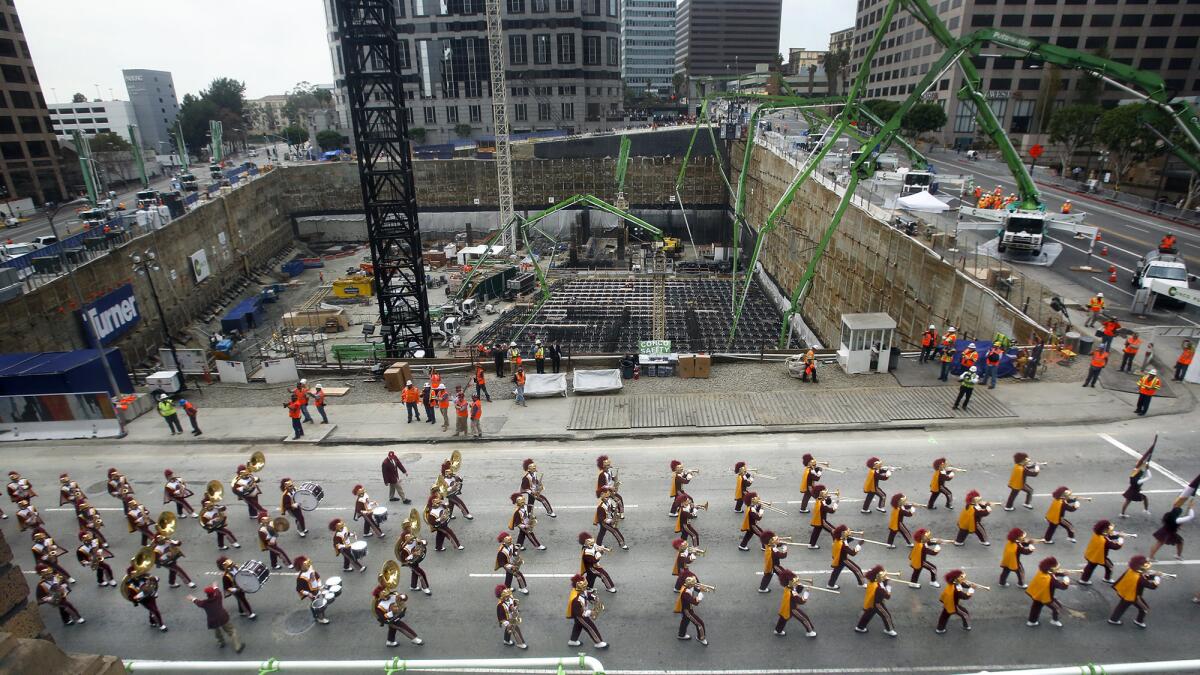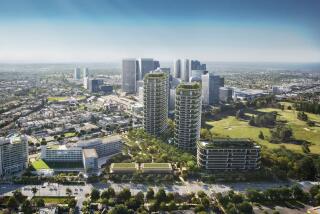New Wilshire Grand concrete foundation in place after record pouring

- Share via
The concrete has been poured.
That was the word from an enormous hole in the ground in downtown Los Angeles, where crews were cleaning up after a marathon, overnight session building a record-breaking foundation for a future high-rise building.
Dubbed the “grand pour,” the engineering feat began around 4 p.m. Saturday, when a fleet of more than 200 trucks began hauling in tons of concrete to the construction site at the corner of Figueroa Avenue and Wilshire Boulevard.
After about 2,000 truckloads and 20 hours of continuous pouring, workers had laid down more than 21,200 cubic yards of concrete that weighed about 84 million pounds, said Sean Rossall, a spokesman for the project.
Judges from Guinness World Records verified the total bested the foundation for the Venetian hotel and casino in Las Vegas, making it the largest uninterrupted pour of slurry on record, Rossall said.
On top of the gargantuan slab of concrete will be built the New Wilshire Grand, which is slated to rise 1,100 feet and become the tallest structure west of the Mississippi.
Developed by Korean Air and estimated to cost more than $1 billion, the project will feature five levels of underground parking, convention space, office suites and a 900-room hotel. The site was previously home to the 16-story Wilshire Grand Hotel.
Large foundations more typically are made in smaller sections and then connected together. Engineers for the New Wilshire Grand wanted to make it as a single block to give the tower more structural support.
The production, transport and pouring of so much concrete within the tight confines of downtown’s densely packed streets made for a logistical challenge.
Eight concrete plants and a backup were used to fill the huge order. Each was no more than 20 miles from downtown to insure the trucks could deliver the concrete within 90 minutes of being mixed. Any longer and the concrete would not be usable.
Once on site, 19 pumps pulled the concrete from the trucks into more than a dozen hoses that workers used to funnel it into the pit.
“It’s gone really, really smoothly,” Rossall said.
The most critical part of the pour comes as the concrete starts to harden, a process that will take about two weeks. During this time, the concrete will heat up as it begins to set.
Usually, heat generated by concrete dissipates, but because of the size and depth of this foundation, the temperatures will rise and could pose a risk to the foundation’s stability. To avoid this problem, a cooling system was developed that will pump cold water through a network of hoses.
Twitter: @joelrubin
More to Read
Sign up for Essential California
The most important California stories and recommendations in your inbox every morning.
You may occasionally receive promotional content from the Los Angeles Times.












